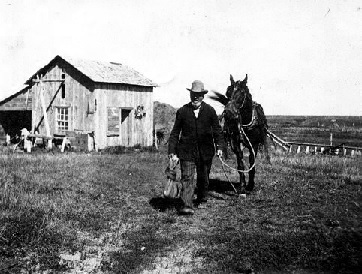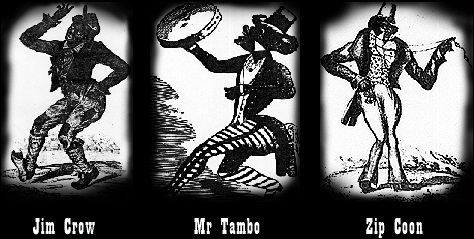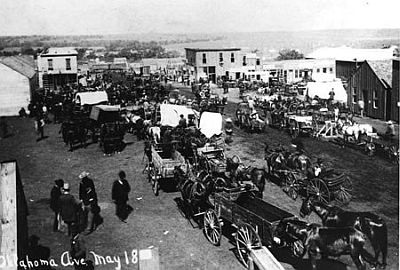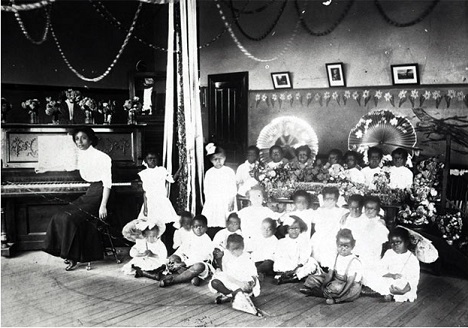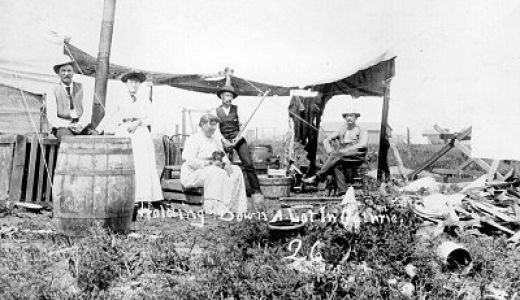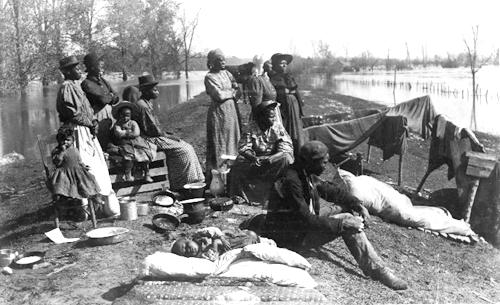
If you haven’t read Part I of this post, first of all let me say SHAME ON YOU! How can you let crucial learnifying SLIP like that? Second of all, I respectfully suggest you start there for, you know, context and stuff.
I was waxing history-nerdish over a column titled “The Blacks in Oklahoma,” published in The New York Times on April 9, 1891. It’s historically significant, and rhetorically rich. The reporter is addressing rumors that black homesteaders had been flowing into the recently opened territory without resources or a plan, and had become a drain on the community and perhaps a danger to others.
Imagine a time in which “others” were automatically treated with such suspicion and accusation. Oh, the good ol’ days…
Many have gone to that territory with nothing except the rags they wore, but they have never become public charges. They have been cared for by persons of their own race until they were in such condition that they could help themselves and help others.
It’s not unusual even today for immigrant groups (these weren’t technically ‘immigrants’ so much as ‘migrants,’ but the idea is the same) to settle in clusters where they can mutually support and assist one another. Some of this may be defensive, but it has an important proactive function as well.
Don’t scoff – you’d do it too if you were moving to a new world.
At this time there are eight families crowded into an old (over one year is “old” in that country) storeroom, which aggregates forty-five people. There they sit day after day, waiting until they can be scattered and settled temporarily upon some of their race’s claims. They have their rages and their bundles of household goods and probably $50 would prove a bonanza to the entire outfit. They are fed by their more fortunate brothers, and some way they will be kept alive until Summer, when they will show that they are self-sustaining, for they will work and exist upon almost nothing.
I wonder if the assertive confidence expressed here reflects the mindset of his subjects, or the convictions of the author himself? That would make an interesting document analysis activity.
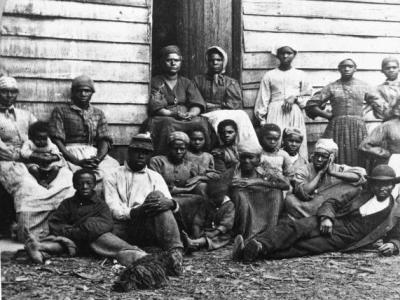
I have some idea what it’s like to be poor, but I lack a real appreciation for the sort of soul-crippling poverty described here. Most of us couldn’t even imagine. And yet…
Humiliating as they confession must be and is, the appeals for aid coming from Oklahoma do not come from the negroes, but from the whites. They exemplify the workings of the co-operative plan, as on claims may be found two, four, and sometimes eight families, all working together and often living together, awaiting the time when more lands will be opened for settlement, when the surplus expect to find claims for themselves.
If there’s a sense of entitlement present, it makes sense it would come from those running to claim land promised to others for as long as the sun shines and the grass grows and so forth. There was little guilt about betraying our national oaths yet again, largely because of a deep conviction that white guys in some way DESERVED this in a way others could not.
Is it such a leap to realize some of those same claimants would ask for help while they wait for the rest of WHAT THEY DESERVE to become available?
Twelve miles northeast of Guthrie, on the eastern border of Oklahoma, was found the little “city” of Langston, the inspiration of E.P. McCabe, the only colored State officer Kansas ever had, who is now Treasurer of Guthrie County. McCabe proposes to establish at Langston a distinctively negro city, and has for months, through colonization societies, been working in the Southern States to secure a population for this new black Mecca.
He has secured a number of families and has sold many lots. Some thirty dwelling houses and a small store comprise the nucleus of what the negroes hope to make a great city. There are nearly two hundred persons already there, and not a white face is to be found in the place.
Black carpenters were at work on a dozen new houses in course of erection, while masons, bricklayers, and other mechanics were making preparations for their future work. They have a black doctor, a black preacher, and a black school teacher, the latter presiding in an unpretentious little building already dignified by being called “the academy.” Adjoining the town site eighty-three acres of land have been broken up, and will this year be used as a co-operative garden by the entire colony.
McCabe is a big deal in Oklahoma history. He was the driving force behind much of the territory’s black settlement in the late 19th and early 20th centuries. His goal of an exclusively ‘black state’ was within reach for a time. It could have happened.
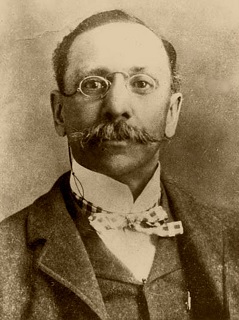
White people, of course, freaked out at the possibility. Imagine if it had failed – all those poor, angry black folks concentrated in one place? What might they do?
Worse, imagine if it had succeeded? How many centuries of American history would have to be re-examined if it turned out black folks were perfectly capable of running their own lives and communities after all? What would that say about…?
Oh yeah – not gonna let that happen. No State For You!
When asked what they were going to live on until something was raised, the general reply was that they “did not come here as paupers,” and that they had brought some money enough with them to live on for some time.
The principal object in establishing this town on the eastern border was to be near the lands of the Iowas, which are expected to be open to settlement before Fall. When these lands are opened Langston will be the supply depot for all of the black race, and there will be repeated the experiment, already a success, that was made in the black-jack country in the northwest part of the Territory, but under much more favorable circumstances, as the new town in situation in a much more productive country.
Black settlers tended to gather in areas with the least desirable farm land, and the least convenient access. While this seems to have occasionally been a result of pre-opening regulations, it was primarily a strategic move on the part of the black community.
It didn’t take much extrapolation to suspect that land recently seized from red men would be unlikely to stay in the hands of black men if desired by white men. So, pick areas white people wouldn’t want. Sure – it would be harder to grow essential crops, and to provide other sustenance… but what else was new?
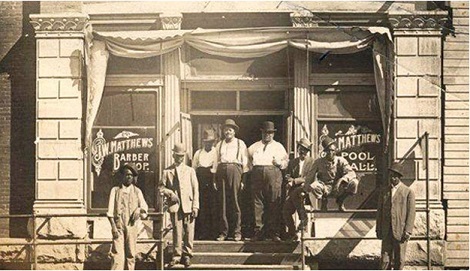
Apparently some were now hoping to grab some land a bit further east, where conditions weren’t QUITE so onerous.
Therein lies the inevitable tension for citizens of color, then OR now. Very real opportunity. Very real progress. Open doors and flashing arrows pointing the way towards very real dreams.
And yet… at any time, those rules can change. They change if you’re not successful enough in the game, and they change even more dramatically if you are. You won’t give up, and you don’t want to lose, you have to be careful how much you win.
I insist to my students that whatever else Oklahoma is, its history is rather unique among the fifty states. At the same time, our past repeatedly reflects larger truths about the nation as a whole. We study Oklahoma history not because we’re unique (even if we are), but because of the light it sheds on the bigger picture.
We’re like a historical funhouse mirror collection. Why can’t THAT be on our license plates?
We’ll conclude in Part III – I promise.
RELATED POST: The Blacks in Oklahoma, Part I
RELATED POST: The Blacks in Oklahoma, Part III
RELATED POSTS: A Chance In Oklahoma, Parts I & II
RELATED POSTS: Boomers & Sooners, Parts I – V

